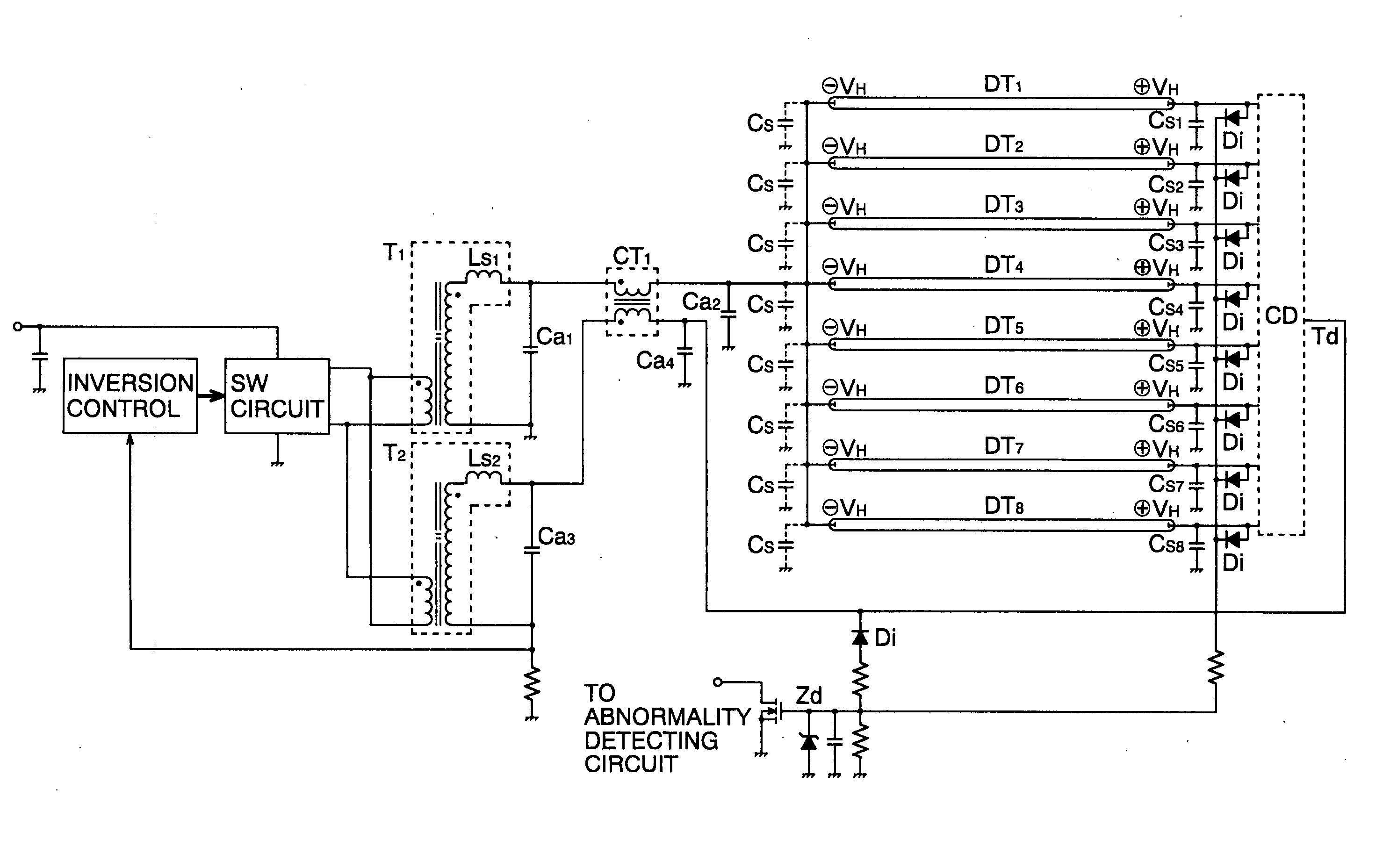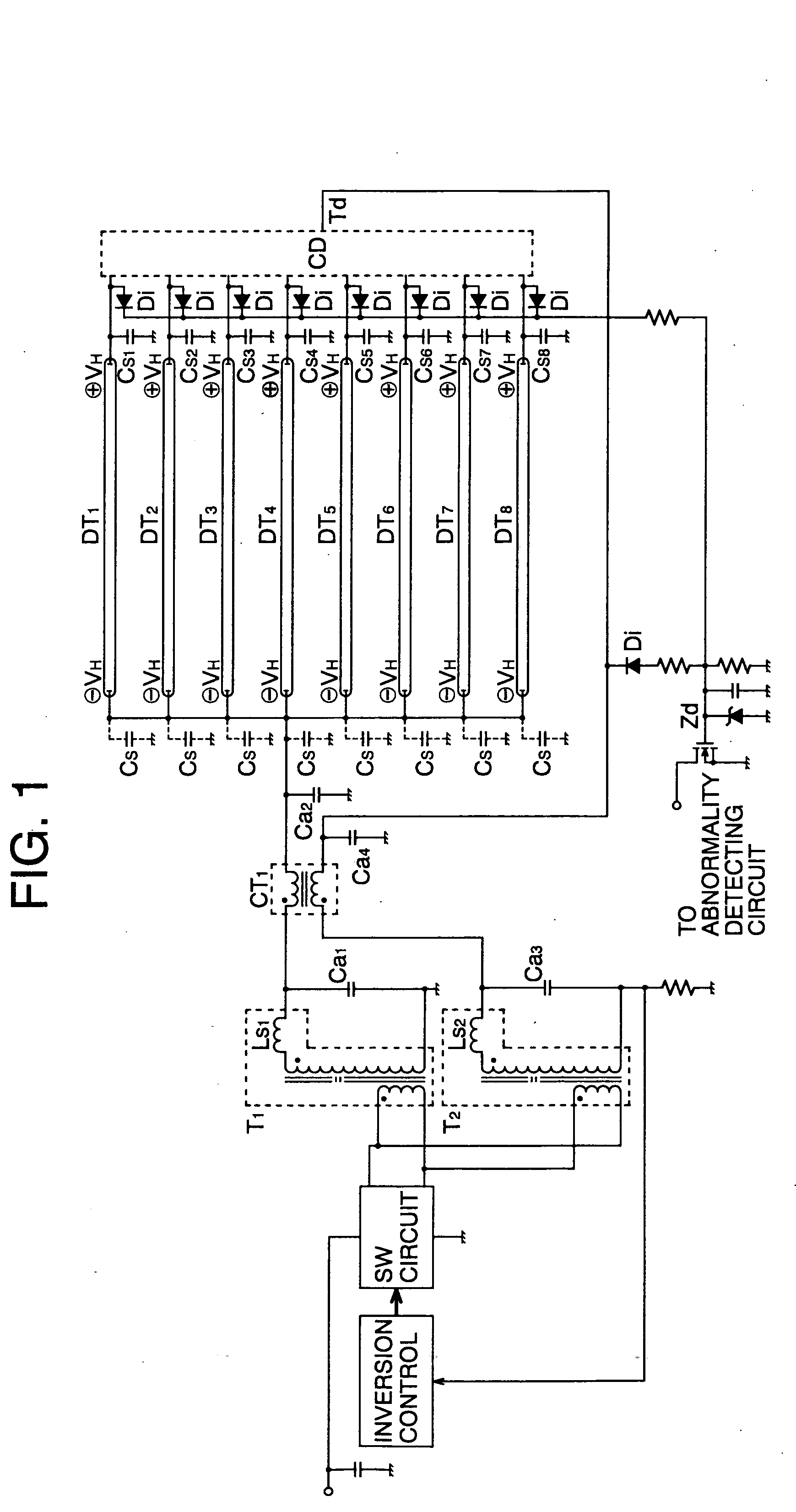Parallel lighting system for surface light source discharge lamps
- Summary
- Abstract
- Description
- Claims
- Application Information
AI Technical Summary
Benefits of technology
Problems solved by technology
Method used
Image
Examples
Embodiment Construction
[0076] The present invention will be described below with reference to the accompanying drawings.
[0077]FIG. 1 is a circuit structural diagram of a double-side high voltage driving system, illustrating one embodiment of the present invention, where an inversion control circuit and a switching (SW) circuit are an oscillation circuit for an inverter circuit and a drive circuit for a step-up transformer. All the inverter circuits that are generally used can be adapted.
[0078] T1 and T2 show leakage flux step-up transformers having leakage inductances (JIS) Ls1 and Ls2 in terms of an equivalent circuit. In circuit diagrams which are to be illustrated simply, the leakage inductance (JIS) Ls may be omitted from the description. Although such a description is not correct one based on the ISO description, it is often customary to make such omission among those skilled in the related art.
[0079] Cw1 and Cw2 are parasitic capacitances between windings, and Ca1, Ca2, Ca3 and Ca4 are auxiliary ...
PUM
 Login to view more
Login to view more Abstract
Description
Claims
Application Information
 Login to view more
Login to view more - R&D Engineer
- R&D Manager
- IP Professional
- Industry Leading Data Capabilities
- Powerful AI technology
- Patent DNA Extraction
Browse by: Latest US Patents, China's latest patents, Technical Efficacy Thesaurus, Application Domain, Technology Topic.
© 2024 PatSnap. All rights reserved.Legal|Privacy policy|Modern Slavery Act Transparency Statement|Sitemap



